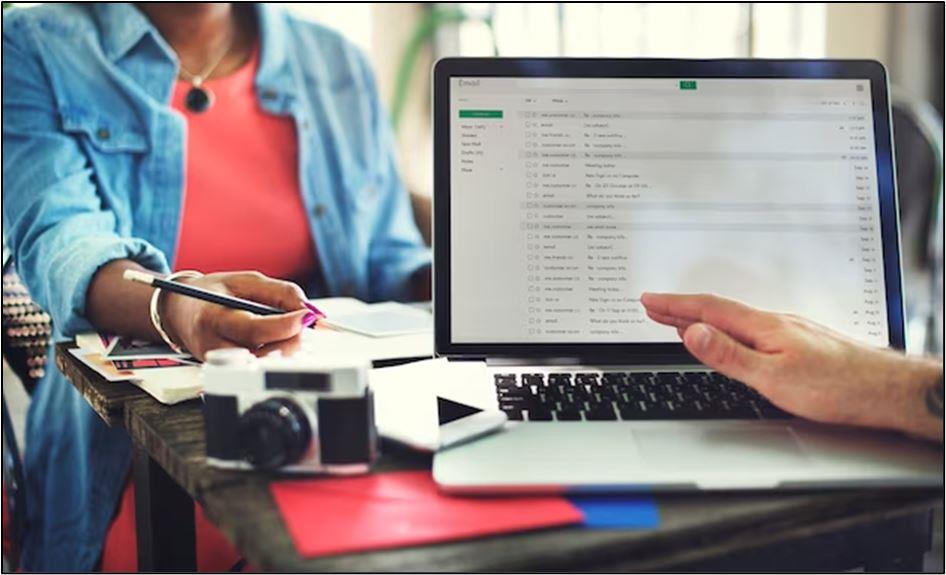
Are you tired of sending countless emails to your leads without seeing any sales?
Do you feel your messages get lost somewhere in the sea of promotional emails?
Well, worry no more.
In this article, we’ll show you how to use email sequences to nurture your leads into sales.
As the saying goes, ‘the fortune is in the follow-up,’ By implementing these tips and strategies, you’ll be able to turn your leads into loyal customers. So, learn how to craft compelling email sequences that will engage your prospects, build trust, and ultimately drive conversions.
What is Lead Nurturing using Email-Sequence?
When someone shows interest in your business, you need to nurture that relationship to turn them into loyal customers. And that’s where email sequences come in.
Email Sequences are a series of emails that are sent out automatically at predetermined intervals. These are designed to engage your prospects, build trust, and drive conversions.
But how do you create an email sequence that works? Let’s have a look.
Crafting an Effective Email Sequence
An effective email sequence can be the key to unlocking conversions and building lasting relationships with prospects.
But what makes an email sequence effective? Well, it’s all about the components.
First, let’s talk about subject lines. They’re the gateway to your email, and they need to be attention-grabbing. Use action-oriented language and personalize when possible.
Next, your opening sentence should be engaging and relevant to your readers. Address their pain points or challenges and offer a solution. For instance, “Are you struggling to generate leads? We’ve got the answers.” This will hook them into reading more.
Now, onto the body content. Ensure that it is valuable, easy to digest, and actionable. Use storytelling, humor, and other literary devices to keep the readers interested. This will make your content more memorable. For instance, “Our CEO’s journey to success wasn’t easy, but he’s sharing his secrets with you.”
Lastly, your call-to-action (CTA) should be clear and concise. Use strong verbs and create a sense of urgency. For instance, “Get Your Free eBook Now” or “Limited Spots Available – Sign Up Today!” This will encourage your reader to take action.
How can Cold email software help to Nurture Leads into Sales using email sequence?
With cold email software, you can create email sequences specifically designed to target and engage with your leads. These sequences are emails sent to your authorities over time, with each email building on the previous one to create a relationship with the recipient.
Using cold email software, you can customize your email sequences to fit the needs and preferences of your target audience. You can include personalized content, such as the recipient’s name or company, to make the email more personal and relevant. You can also use attractive, engaging subject lines that grab attention and compel the recipient to open the email.
With the help of cold email software, you can automate the entire email sequence process, saving you time and allowing you to focus on other essential aspects of your business.
Implementing Your Email Sequence
Timing, frequency, and list segmentation are key factors before email sequence implementation.
To start, it’s essential to consider the timing of your emails. Depending on your target audience and industry, certain times of day or days of the week may be more effective for open rates.
Also, the frequency of your emails should be consistent and manageable for subscribers. A balance between staying top-of-mind and not being pushy is crucial.
List segmentation is also crucial. Dividing your subscribers based on demographics, behaviors, or interests allows for targeted and personalized messaging. This leads to higher engagement rates and more conversions.
Testing and optimizing your email sequence is an ongoing process that can lead to maximum effectiveness. Continuously tweaking and improving your arrangement can increase open rates, click-through rates, and conversions. A/B testing subject lines, email copy, and calls-to-action can provide insights into what resonates with your subscribers.
Lastly, tracking and analyzing the email sequence’s performance is critical to understanding its effectiveness. Utilizing analytics tools to monitor open, click-through, and conversion rates can provide valuable insights.
Common Mistakes to Avoid
Email sequences can be a potent tool for businesses to engage with their audience and nurture leads into sales. However, many companies make common mistakes that can hinder the effectiveness of their email sequences. Here’s how you can prevent them:
Don’t be pushy. Businesses may send too many emails too frequently or use aggressive language that can turn off the recipient. This approach can make it seem like the industry is only interested in creating a sale rather than providing value to the customer.
Another mistake is not providing enough value. Businesses may send irrelevant emails to the recipient or offer little to no value. This can cause the recipient to lose interest and stop engaging with the company.
Make the email relevant to the receipt. Businesses may send irrelevant emails to the recipient or offer little to no value. This can cause the recipient to lose interest and stop engaging with the company.
Bottom Line
It’s not enough to exchange contact information – you need to invest in the relationship if you want it to blossom into something more. Remember, each email should provide value. Offer insights, tips, and solutions that will make their lives easier. This builds trust and keeps them coming back for more.
Chris Mcdonald has been the lead news writer at complete connection. His passion for helping people in all aspects of online marketing flows through in the expert industry coverage he provides. Chris is also an author of tech blog Area19delegate. He likes spending his time with family, studying martial arts and plucking fat bass guitar strings.